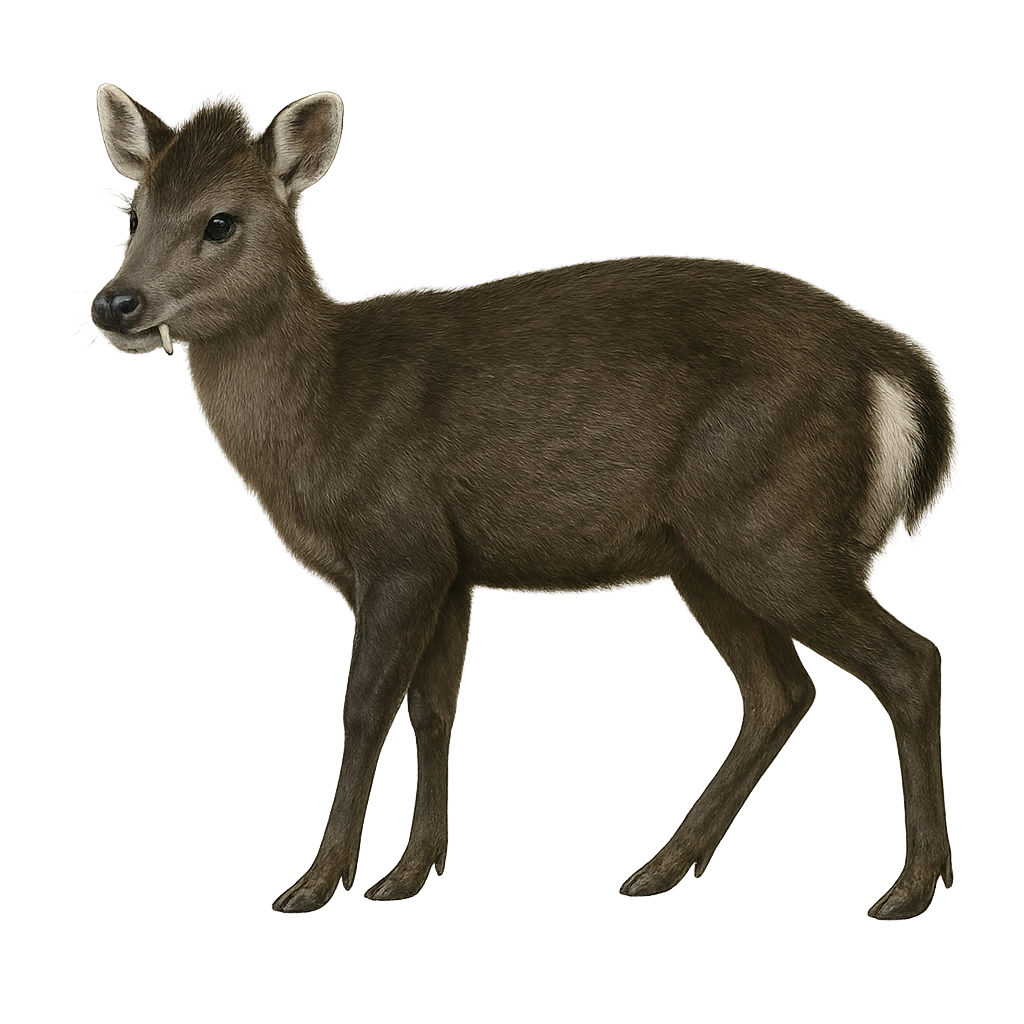Your wildlife photography guide.
Explore the tufted deer in detail, study its behavior, prepare your shots.
Where to observe and photograph the tufted deer in the wild
Learn where and when to spot the tufted deer in the wild, how to identify the species based on distinctive features, and what natural environments it inhabits. The WildlifePhotographer app offers tailored photography tips that reflect the tufted deer’s behavior, helping you capture better wildlife images. Explore the full species profile for key information including description, habitat, active periods, and approach techniques.
Tufted Deer
Scientific name: Elaphodus cephalophus

IUCN Status: Near Threatened
Family: CERVIDAE
Group: Mammals
Sensitivity to human approach: Very shy
Minimum approach distance: 10 m
Rut period: November to December
Gestation: 180-210 jours
Births: May to June
Habitat:
Dense forests, mountainous areas, undergrowth
Activity period :
Mainly active at night, generally discreet during the day.
Identification and description:
The tufted deer, Elaphodus cephalophus, is a small deer species native to the mountainous forests of Asia, mainly in China and Myanmar. It is characterized by its modest size, standing about 50 to 70 cm at the shoulder, and its dark brown coat. Males have small antlers and prominent canines, giving them a distinctive appearance. This deer is primarily solitary, though it may occasionally be seen in small family groups. It is very discreet and prefers dense, wooded areas where it can hide from predators. The tufted deer is an herbivore, feeding on leaves, fruits, and young shoots.
Recommended lens:
400 mm – adjust based on distance, desired framing (portrait or habitat), and approach conditions.
Photography tips:
To photograph the tufted deer, it is essential to remain discreet and patient. Use a telephoto lens of 400 mm or more to capture detailed images without disturbing the animal. Focus on crepuscular hours when the deer is most active. Look for areas with dense vegetation, as these deer prefer places where they can hide. Be attentive to subtle movements in the undergrowth and use a tripod to stabilize your camera in low-light conditions.
The WildlifePhotographer App is coming soon!
Be the first to explore the best nature spots, track rutting seasons, log your observations, and observe more wildlife.
Already 1 431 wildlife lovers subscribed worldwide

